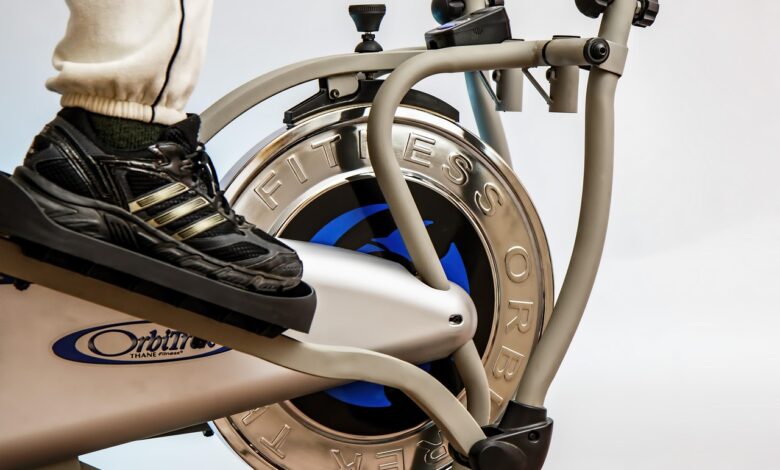Elliptical leg exerciser for seniors manual

Aging gracefully includes maintaining mobility, independence, and overall well-being. For seniors, regular physical activity is vital—but traditional exercises might not always be practical due to joint pain, balance issues, or limited strength. That’s where the elliptical leg exerciser for seniors becomes a game-changer.
This comprehensive guide explores everything seniors and caregivers need to know about using elliptical leg exercisers—specifically manual models that operate without screens or digital complexity. Discover how to use them safely, effectively, and consistently to enhance physical and mental well-being.
What Is a Manual Elliptical Leg Exerciser?
An elliptical leg exerciser is a compact, low-impact device that mimics walking or cycling while seated. It provides smooth, repetitive movements to help improve:
Blood circulation
Joint flexibility
Muscle strength
Cardiovascular health
Manual versions operate without motors or screens. You control the motion entirely with your legs, allowing a fully self-powered, low-tech workout that’s ideal for older adults.
Why Choose Manual Over Motorized?
Modern models often include app integration and motorized assist, but these features can confuse or overwhelm older adults. A manual version offers many unique advantages:
No electricity required
Simpler to use with zero digital learning curve
Quiet operation, perfect for watching TV or reading
Lower cost and fewer maintenance issues
Engages muscles more by requiring active pedaling
Manual exercisers promote independence and encourage physical engagement—an ideal combination for healthy aging.
Key Benefits for Seniors
1. Joint-Friendly Exercise
The elliptical’s smooth, gliding motion minimizes stress on knees, hips, and ankles—ideal for arthritis sufferers or those recovering from injury.
2. Better Circulation
Sitting for long periods leads to poor blood flow in the legs. Regular elliptical use improves circulation and helps prevent swelling or varicose veins.
3. Improved Muscle Strength
Even low-resistance pedaling activates leg muscles, helping preserve strength and mobility, especially in:
Calves
Hamstrings
Quadriceps
Hip flexors
4. Enhanced Balance & Coordination
Daily use can improve coordination and lower the risk of falls.
5. Mental & Emotional Health
Movement stimulates endorphin release, easing symptoms of depression or anxiety and improving mood and alertness.
Ideal Users of Manual Elliptical Leg Exercisers
Seniors seeking home-based exercise
Individuals recovering from knee or hip surgery
People with limited balance or mobility
Those with sedentary lifestyles or circulation issues
Caregivers looking for safe, consistent movement therapy tools
Before starting any new exercise regimen, a consultation with a healthcare provider is recommended.
How to Use It Safely: Step-by-Step
Choose a Firm, Flat Surface
Use a non-slip mat for added safety.Select a Comfortable Chair
Sit in a stable, straight-back chair with feet reaching the pedals comfortably.Start Pedaling Slowly
Begin with 2–3 minutes of gentle movement to warm up.Adjust Resistance
If your machine includes tension settings, start at the lowest level and increase gradually.Maintain Good Posture
Sit upright, avoid slouching, and keep shoulders relaxed.Session Duration
Start with 10–15 minutes, increasing to 30 minutes as strength builds.Cool Down
Always finish with slow pedaling to bring your heart rate down.
Weekly Exercise Plan for Seniors
| Week | Frequency | Duration | Resistance Level |
|---|---|---|---|
| 1–2 | 3x/week | 10–15 mins | Low |
| 3–4 | 4x/week | 15–20 mins | Medium |
| 5–6 | 5x/week | 20–30 mins | Medium to High |
Adjust based on energy, comfort, and doctor’s guidance.
Top Manual Elliptical Leg Exerciser Models for Seniors
1. Sunny Health & Fitness Magnetic Mini Exercise Bike
Adjustable resistance knob
Quiet belt drive
Sturdy steel frame
Perfect for under-desk or chair use
2. Stamina InMotion E1000
Compact and lightweight
Forward and reverse motion
Textured pedals for grip
3. Himaly Mini Exercise Bike Pedal Exerciser
Easy tension adjustment
LCD display (optional usage)
Foldable and portable
When choosing, look for wide pedals, grip stability, and adjustable resistance—all important features for seniors.
Tips for Specific Health Conditions
Arthritis
Use the lowest resistance
Warm up longer to loosen joints
Consult a rheumatologist for safety advice
Osteoporosis
Ensure chair is stable
Maintain upright posture to avoid spinal stress
Post-Surgery Recovery
Begin with short sessions (5–10 mins)
Stop immediately if you feel pain or unusual discomfort
Diabetes or Poor Circulation
Keep feet moving regularly to encourage blood flow
Avoid crossing legs while pedaling
What Caregivers Should Know
If you’re helping an elderly loved one incorporate an elliptical leg exerciser into their routine:
Supervise early sessions for proper form
Encourage consistency but avoid pressure
Record progress to build motivation
Celebrate small wins, such as longer durations or increased resistance
These steps help improve compliance and turn exercise into a regular habit.
Common Mistakes to Avoid
Skipping warm-up and cool-down
Sitting too far/close to the pedals
Overexerting on day one
Using on a slippery floor
Neglecting hydration
Comparing Manual vs. Motorized
| Feature | Manual | Motorized |
|---|---|---|
| User Control | Full manual control | Automatic assisted motion |
| Muscle Engagement | Higher | Lower |
| Complexity | Simple | More complex |
| Price Range | Lower | Higher |
| Portability | High | Medium |
Real Stories: Seniors Who Love Their Manual Elliptical
Mary, 74, Retired Teacher:
“I use it while watching TV. It keeps my knees from stiffening up and gives me energy. Best thing I’ve bought in years!”
George, 82, Former Carpenter:
“My doctor recommended light pedaling. This machine is simple, no screens, no confusion—just movement.”
Conclusion
A manual elliptical leg exerciser for seniors is more than just a fitness gadget—it’s a tool for independence, energy, and better quality of life. Unlike complicated motorized models, manual versions are easy to use, affordable, and effective at improving leg strength, circulation, and heart health without stress or strain.
Whether you’re a senior or a caregiver, incorporating this simple, compact machine into your routine can make a significant difference. From better mood to stronger muscles and safer joints, it’s one of the best low-impact exercises you can do from the comfort of a chair.
Make it part of your daily habit and take confident steps—right from your seat—toward a healthier life.
FAQs
Q1: Can a senior use a manual elliptical leg exerciser every day?
Yes, if used moderately and with medical clearance. Most benefit from 20–30 minutes daily.
Q2: Is this safe for someone with a knee replacement?
Often yes, but only after doctor approval and at the lowest resistance to start.
Q3: What if my balance is poor?
These are used while seated, so balance is not a major concern. Use a stable chair and non-slip mat.
Q4: Will it help with swollen legs or ankles?
Yes. Regular pedaling improves circulation and reduces fluid retention in lower limbs.
Q5: Do I need special shoes?
Comfortable non-slip shoes are ideal. Avoid barefoot use unless the pedals are designed for it.


